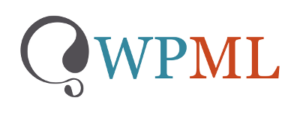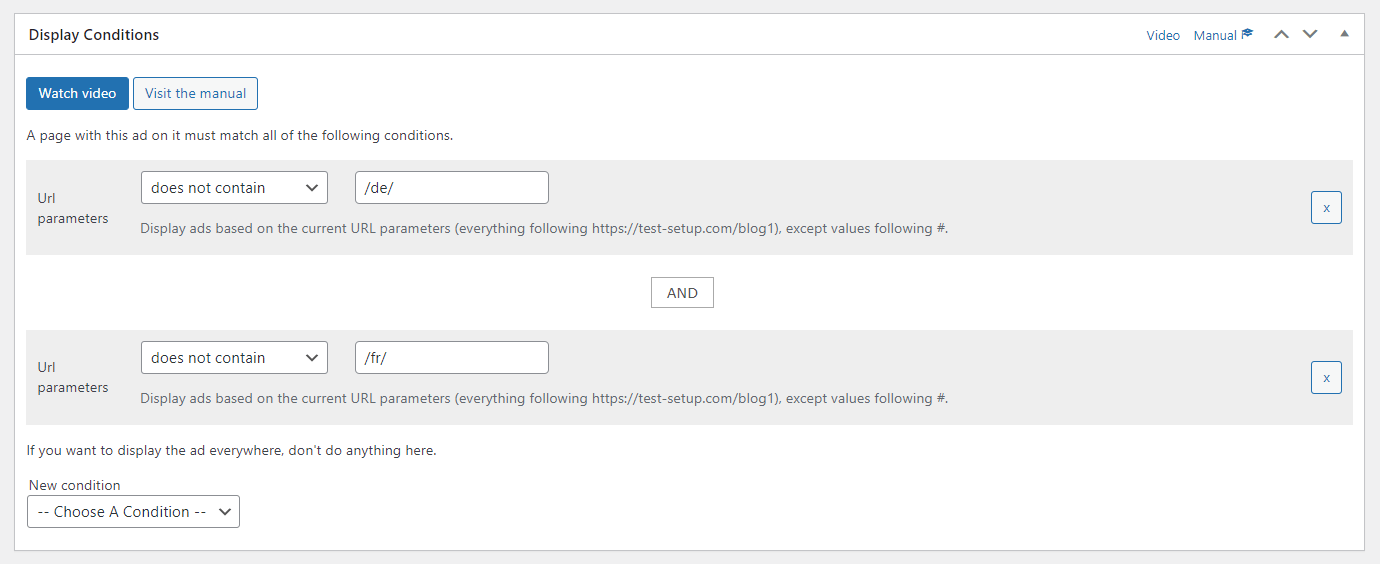Internationalization, or creating a website that supports multiple languages, is an excellent opportunity for website owners to reach new audiences, grow their presence, and increase their revenue potential.
If you plan the internationalization of your website, consider using a WordPress plugin like WPML, Polylang, TranslatePress, or Weglot. They allow you to create and manage multilingual content easily. These plugins also provide features for translating menus, widgets, and custom post types, simplifying the process of internationalizing a website significantly.
Table of Contents
Advanced Ads Pro integrates well with those plugins. It allows you to target ads to the particular content’s language which plays a critical role in determining the success of a campaign.
By delivering advertisements in the correct language, you can increase the relevance of your ads. The reason is simple: ads relevant to the visitor’s language and culture are more likely to be clicked on and lead to a conversion.
Considering cultural differences and adjusting the website’s design, tone, and messaging can include using different images, colors, and layouts to appeal to other cultures. Additionally, putting the exact placement of ads to scrutiny can be of impact, as different cultures may have other preferences.
Multilingual plugins with dedicated conditions
Below, we will go into more detail about integrating Advanced Ads with the most popular multilingual plugins.
WPML

WPML is one of the most prominent plugins for managing multilingual websites, and Advanced Ads Pro offers a dedicated integration.
This way, you can make ads and ad groups translatable to be used on the different subpages in the WPML logic familiar to you.
In addition, Advanced Ads Pro automatically detects when the WPML plugin is active and adds the WPML Visitor condition. You can use it to target ads and placements to the specific language of the content.
Polylang

The free Polylang plugin creates individual subdomains for the different language versions.
In order to show or hide ads based on specific content languages, we recommend applying Advanced Ads’ Language display condition.
Alternatively, you can manage this targeting using Advanced Ads Pro‘s URL Parameter display condition.
Multilingual plugins that integrate through the URL Parameter condition
Even lacking a custom-built integration for your preferred multilingual plugin, you’ll be able to serve internationalized ads with Advanced Ads by means of the universally applicable URL parameters method.
TranslatePress

The targeting of ads by language works similarly with the TranslatePress plugin. If you use the visitor condition URL parameter, you can serve ads depending on the individual subdomain for each existing language.
Besides, TranslatePress offers a shortcode logic that you can also use to deliver ads based on the language.
Weglot

Using the Weglot plugin, displaying or hiding ads depending on the language of the content works in principle in the same way as with TranslatePress.
The plugin creates a separate directory for each language offered. Therefore, you can target the ads and placements to the different user groups via the language-specific URL slug using the URL parameters condition.
Conclusion
Managing ads on multilingual websites can be a game-changer for those looking to expand their reach and revenue potential in today’s globalized world. Integrating multilingual plugins with Advanced Ads Pro can significantly simplify targeting ads to specific content languages. This, in turn, can increase the relevance of your ads and make them more likely to be clicked on, leading to conversions.
Using multilingual plugins and Advanced Ads Pro, you can effectively manage and target ads to specific languages, ultimately enhancing your website’s international presence and potential for success. Why don’t you set up a couple of translated banners, serve them in low-performing placements, match them to your multilingual plugin’s languages, and watch how their mean CTR develops over the next few months? You might be in for a surprise!
FAQ
A multilingual campaign refers to an advertising strategy that targets users in different languages. It involves creating and delivering advertisements in multiple languages to cater to a diverse audience. By tailoring your campaign to specific languages, you can increase engagement, improve ad relevance, and expand your reach to a global audience.
When it comes to translating your website, the methods you choose depend on your platform. If you use WordPress plugins like WPML, Polylang, TranslatePress, or Weglot to manage multilingual content efficiently, you can easily utilize Advanced Ads to target ads to different languages. Furthermore, WPML allows you to translate and apply ads to specific WPML languages. Accurately translating your ads ensures they connect with your target audience in various languages, enhancing their resonance and effectiveness.
As a publisher, there is no need to translate AdSense ads for your multilingual website. However, strategically targeting AdSense ads to audiences that match the ad’s language can have financial benefits. For example, you can maximize your revenue potential by targeting ads to audiences with higher click prices and hiding them in regions with lower click prices, which may be so low because there are an insufficient number of ads in that particular region’s language. This approach allows you to effectively monetize your multilingual website by presenting ads to the most relevant audiences, increasing the likelihood of higher click-through rates and generating more revenue.

